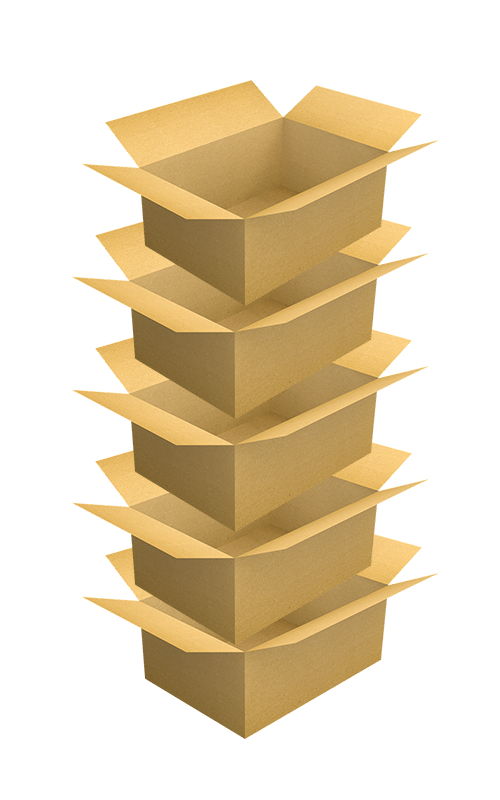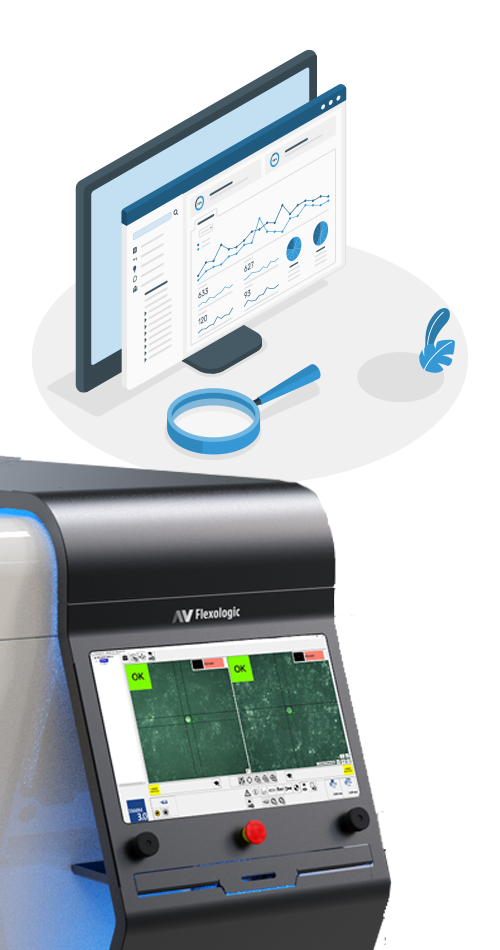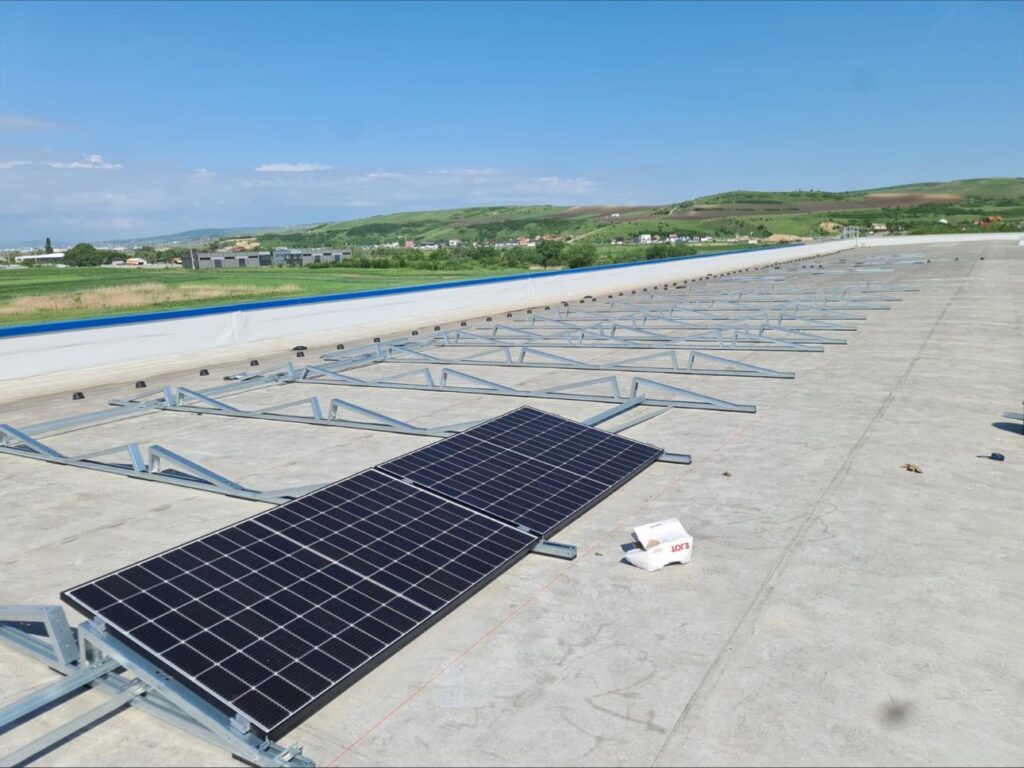Six Major 2024 Flexo Printing Trends that are Here to Stay
The flexographic printing market will keep growing steadily in all countries, some more rapidly than others, for a total predicted increase of 23,3 billion for the period 2022-27. The packaging sector will face the biggest change due to the following reasons:
- Demand is becoming more diverse
- Sustainability has (rightly) become a key factor for flexo companies
- New solutions for corrugated printing are emerging
These changes mark just the tip of the iceberg, let’s dive deeper into the six major flexo printing trends.
1. Higher volume of corrugated packaging

Despite events that have negatively impacted the financial conditions of many countries and individuals, global retail sales are projected to increase by almost 10% in 2024 compared to the last year. Online shopping has increased hugely during the COVID pandemic, since we had no other way to receive goods, and this trend is here to stay. This will continue to contribute to the high volume and demand for corrugated packaging, and the good news is that flexo will remain the predominant method for printing on packaging.
Meanwhile, flexible packaging is steadily gaining prominance in the field of printing production. Following corrugated board, flexible packaging is expected to become the second most in-demand flexo output. Flexible packaging provides a versatile solution for industries such as food, cosmetics, and even medical supplies, as it can adapt its shape once the product is inside the package.
2. Shorter printing for all categories

The next trend spans various categories, including labels, flexible packaging, folding cartons, and corrugated materials. Marketing is adapting to consumer desires for differentiation, resulting in an increase in shorter print runs across all these categories.
First and foremost, product customization leads to an increase in Stock Keeping Unit (SKU) proliferation. Each product variation, whether it involves color, size, options, or more, requires a unique SKU, all of which demand custom labeling and packaging. Sometimes these products are also available in smaller quantities and for limited durations. All these changes are affecting printing production, demanding shorter job runs with specific settings.
Marketeers focus specifically on how the product and packaging will appear on the shelf. Companies require printing on special substrates, with eco-friendly features, and printers have to take these factors into account, even for these shorter job runs.
3. Automation and robotization

Manufacturing and automation go hand-in-hand since automated technologies are enhancements when it comes to productivity, cost-effectiveness, consistency & quality.
The printing industry is also benefiting from automation, most noticeably on automated printing presses. While most developments have occurred in the narrow web sector, automated solutions are now being adopted in mid web, wide web, inline, and CI presses as well.
The automation trend includes the prepress department, where automated plate mounting solutions are available. The latest and most advanced solution is RoboCELL, recently recognized as a technical innovation for its significant time-saving, risk reduction, and improved mounting quality in the prepress workflow.
Automation is one of the biggest trends in flexo.
- It requires only a minor effort from operators, making plate mounting, printing, and post-printing almost operator-independent. This is a significant advantage, especially considering highly-skilled flexo operators are becoming increasingly rare.
- It can achieve high speeds, saving a lot of time, making it possible to run more print jobs.
- It often has a high and fast ROI, primarily because it provides a significant improvement in operations and product quality. Overall, it optimizes the entire printing production process in shortened times.
Thanks to automation, flexo printers can remain competitive within the flexographic industry, but also compete strongly against digital printing.
Stay updated on the latest flexo news by following us on LinkedIn (new posts every week)!
4. Digital transformation in the printing sector

Digitalization is everywhere, and in the case of flexo printing, various processes experience a highly positive impact when they are digitalized.
With digitalization, printers can replace obsolete, time-consuming, and less productive equipment.
Digital enhancements are improving various aspects of printing production. That includes prepress departments using flexo plate mounters with digital tools and flexo equipment with digital integrations to simplify the work of the operators.
Other processes are or will be digitalized soon in the printing and finishing departments. The overall digitalization will keep flexo printing a high quality, more efficient, and cheaper alternative to digital printing, which is the main flexo competitor.
5. Awareness in sustainability

Sustainability is becoming a shared value, and it is also one of the 6 main flexo printing trends. Younger generations, in particular, take notice when companies prioritize environmental responsibility. Printing plays an integral role in every product on the market.
Eco-friendly practices for printers fall into two categories: the actual materials used for product packaging and the less noticeable printing company processes.
A significant buzzword to keep an eye on is ‘green packaging’ or the materials and manufacturing techniques that can reduce the harmful environmental impacts of packaging. Paper and plastic are the primary substrates of packages, and printers are working diligently to make them more recyclable, compostable, or reusable. As a result, printers need to consider multiple eco-friendly options when selecting printing materials.
At the same time, printers can work on their overall carbon footprint, reducing waste and energy in different departments. As a meaningful example, at AV Flexologic we have the role of automated plate mounting for different sustainability benefits.

Printers can use more eco-friendly plates and inks. A promising trend is the use of water-washable flexo plates, such as Toyobo Cosmolight, which do not require the use of hydrocarbon-based solvents or even aggressive cleaning chemicals. The growing shift toward water-washable plates aims to tackle the regulated volatile organic compounds and disposal issues around solvent-based plate developing.
Lastly, printing companies can improve the energy consumption of their factories and offices by using renewable sources, such as solar panels on their roofs. At AV Flexologic we opened our energy neutral factory in Cluj-Napoca in 2023.
6. Fewer high-skilled operators available

This is the only inherently negative trend in flexo. Different sources, including the Flexographic Technical Association, have predicted a shortage of workers in the flexo industry. It is harder than ever to find qualified candidates, including entry-level applicants. Two demographic phenomena influence this trend. First, there has been a decline in birth rates in many European, North American, and East Asian countries; second, the progressive population aging is leading to the imminent retirement of many highly skilled operators.
This trend is referred to as the ”skilled Flexo Press Operators crisis”, and it appears that finding enough young and talented operators, who are the engine of every flexo printer, will be challenging.
The easiest and preferred solution would be automation and digitalization. By combining these two processes, printers can guarantee a stable high-quality output at every printing stage. The difference will be that we will go from ‘high-skilled operators’ to ‘high-skilled technologies’.
